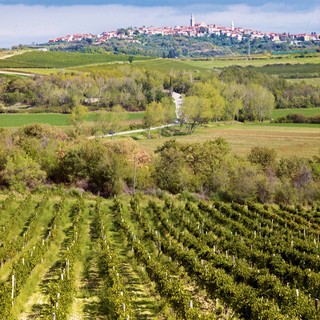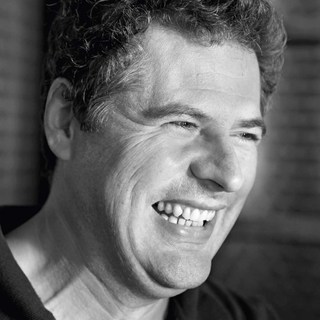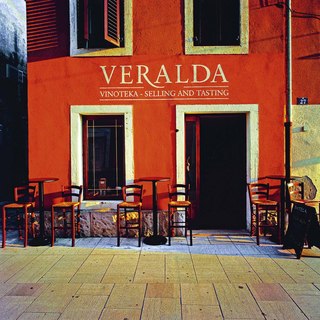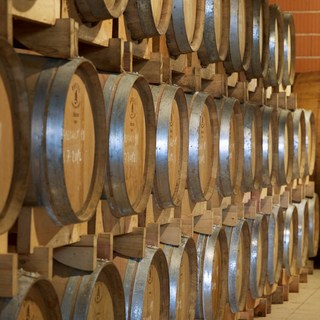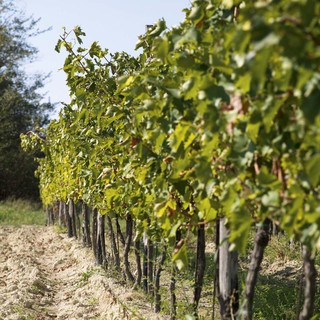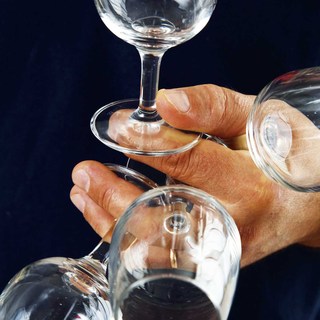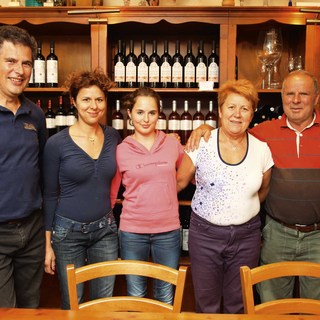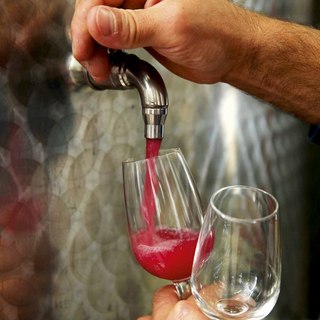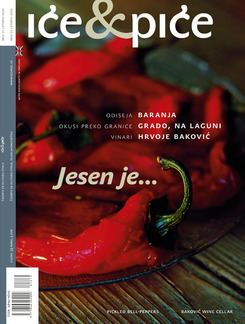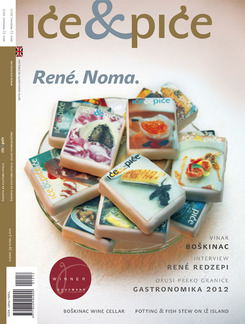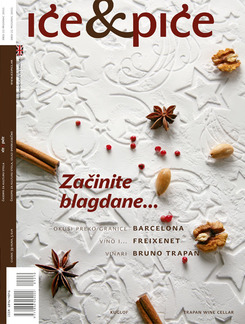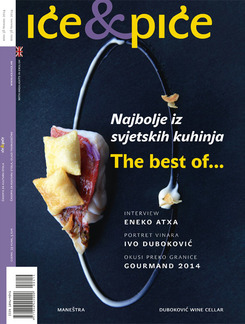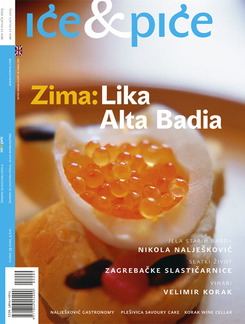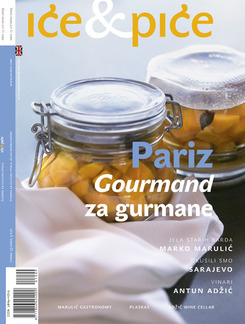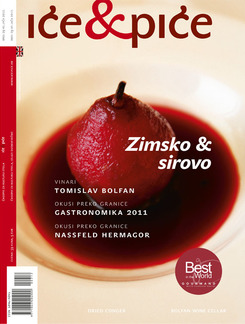Wine cellar’s ID
Tradition
Since there are lots of Visintins in Istria, we decided on the name Veralda, after the place name of the area that we can see alongside us. My granddad (nono) was born in Austro-Hungary, in 1914, and my dad in 1942, when we were part of Italy, and mum during the time of the Free Territory of Trieste, I in 1968, during Yugoslavia, and my son in 1998, in Croatia. All of us born – here. Just to explain what happened in this area in just four generations. The family tradition was long based on 3-4 hectares of vineyard, until 14 years ago I went to the Buje hillocks, to the Kaštanjari distinct, and saw 20 ha of untended vineyards on top of a hill, after the collapse of the (socialist) agribusiness of PIK Umag. Here I literally fell in love. You don’t calculate, you just feel the call. How many good winemakers have arisen in the area of Buje and Umag since PIK collapsed, giving the Buje area a really good reputation. The next day I went to the council and got a lease on (from Article 13) unused farm land, and between 2007 and 2011 we finally bought it up. For the first year, we produced only 5000 litres from these 20 hectares. What a disaster. Increasing the quantity, we have also increased our volumes and capacities. First of all we worked in a cellar in Buje, and then in 2000 we took a lease on the cellar in Brtonigla, and, although in 2002 they offered to sell us this cellar, I decided on a new one, my own, alongside the house in Kršin.
Vineyards and varieties
We currently have 28 hectares of vineyard, and this year we have cleared almost 12 ha, which we’ll certainly plant with Malvazia, and there’ll be 40 hectares in the end. We have changed the plantations, and we are ploughing up the Ancelotta and Merlot, putting in Malvazia and Teran, the only two indigenous varieties that really interest me, because only with authentic regional products that give some distinctiveness to the region can we survive globalisation. We’re tied to them by the blood, and what’s most important is that they are more disease-resistant than other varieties, which directly affects the amount of fungicides we’re going to use in nature.
Cellar, technology, wines
What we have got for primary grape processing is the state of the art – Vaslin Bucher. Costs twice as much as the competition, but I didn’t want the excuse of saying that if someone made something better it was because of his equipment. We were among the first to bring in a flotator, five years ago, for the faster clarification of the most, and the use of as little sulphite as possible. The capacity of the cellar is about 4000 hectolitres. We produce 50% Malvazia, and the rest is Teran, White Muscat, Cabernet Sauvignon and Merlot.
Istrian Malvazia is a wonderful wine that has the origin of the grapes in the name of it. There was almost nothing to discover here. We are buying cooling equipment, preserving the aroma, and we have a lovely wine that everyone likes. Not like that with Teran. We are reworking Teran, making a top class wine, but there is always someone who won’t like it. I couldn’t be still, because as a winemaker, my basic mission is to give the customer a positive emotion, and I said, either we’ve got to change the wine, or the customers. Its characteristics would make Teran a super sparkling wine, if it weren’t for that dense red that you can’t see the bubbles through, and after all, bubbly without the bubbles is like a man without a moustache.
When it discovered a Teran rosé (Vipavski refošk [Refosco]) in 2008, Veralda succeeded in doing what had previously been impossible in the wine world. It was the first cellar in history that had sold a Teran rosé. With the approbation of all the eminent winemakers and important wine critics in Croatia, for to discover a new product from an indigenous grape means to lay the foundations for the development of winemaking in general. At the Prowine Fair in 2008, while I was presenting the wines to Mr Budimir Petar, an importer from Germany, Ivan Enjingi came up, asking for a glass of the best rosé he had ever tasted, and I was happy to pour him a glass. Petar asked me afterwards how much I had had to pay Enjingi to say that to me. Some things have no price...
People
A family business in which we have kept up the tradition. At noon every day (family and workers), we eat here, at this table. This privilege to be with your loved ones every day and share every moment with them is what makes grape growing and life on the estate special. The pleasure would be much less were it not for the magical hands of my mum, Nives.
Philosophy
Our philosophy is to make fresh and frisky wines that nevertheless surprise with their finish.
To give an emotion that lasts as long as possible. The more educated the customer is, the greater emotion he’ll get, but if you’re a beginner, you’ll understand easier.
How do you recognise our Malvazia? It lasts in the mouth like a candy because of the mineral salts it’s rich in, give us a long aftertaste, fresh and frisky. We have managed to join the friskiness and the finish. It’s like drinking a white wine, light and frisky, with a finish like a red. So it’ll match every kind of food. In winemaking we have all got so good that the only difference is where the grape comes from, the terroir, and not who is making it. On the highest hill of the Buje hillocks grows the Prestige Malvazia. Top position for a top pleasure, that lasts.
Future in wine and oil
Our objective is to present our rosé to the general public, for still today there are those who see rosé as something that is just not red and not white, and they don’t know what they’re missing. I would like to tell all winebibbers to be curious, because by discovering something new, you’re actually discovering yourself, or your own feelings, actually. It’s the finest feeling when the impossible becomes possible. This happened in our rosé – we joined dry and sweet.
As well as wine, we are into olives. We have four hectares of olive grove. We are a pioneer in promoting the qualities of Istrian olive oil in the world. If we look at the Mediterranean basin, where 95% of all the world’s olive oil is produced, Veralda is in the northernmost area where olives grow, and for this reason we have the greatest concentration of oleic acid in the triglyceride of the oil. Primarily because of the processing of our oil at the right time you’ll feel in it the freshness of the olive fruit, the bitterness of polyphenols and the piquancy of the bjelica (an indigenous Istrian variety of olive tree). If you google Luciano Visintin, the third or fourth line will give you the name of our importer who sells oil in all the world’s capitals, from Tokyo to New York. We’re especially proud to be Istrian olive oil ambassadors to the world.
